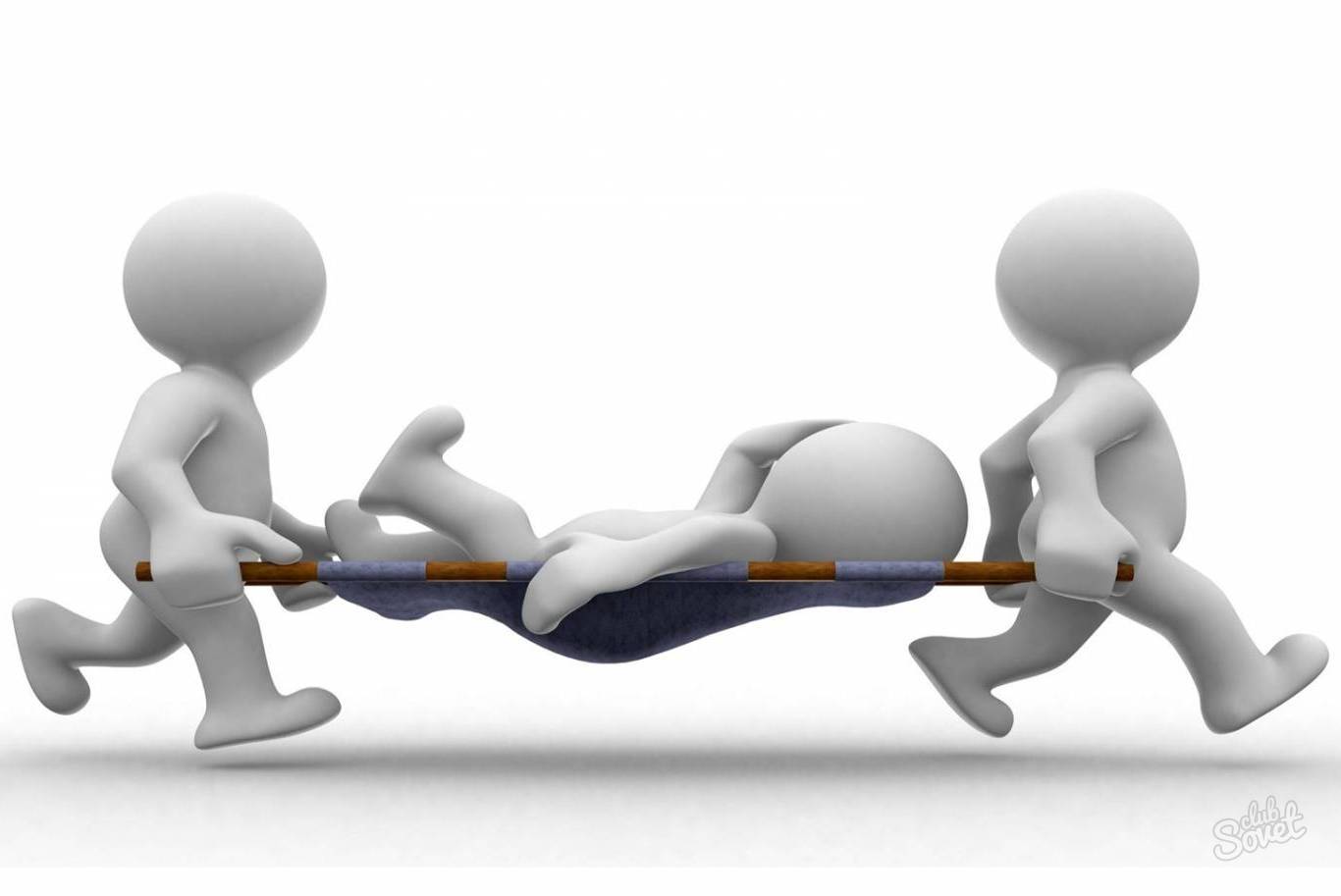Frequent loss of consciousness. Why do people suddenly faint?
0 604 0
Fainting (or syncope) is a brief loss of consciousness that occurs when blood flow to the brain is disrupted.
There are many reasons for fainting. In the article, we will look in detail at the mechanisms of the development of fainting and tell you how to notice a person in a pre-fainting state in time in order to protect him from dangerous consequences.
How does fainting occur?
Fainting occurs due to a decrease in blood supply to the brain, where oxygen does not reach, and the person suddenly feels weak, dizzy and has an increased heart rate. There is a fever, as if there was a fever, and dry mouth. This state does not last long (up to half a minute). A person is most often conscious, but cannot always help himself. Coordination of movement at this moment is weak, the legs cannot hold up, and you can fall.
People around you should help you sit down or lie down, support you, and give you water. After all, during a fall a person can get seriously injured.
Causes
Fainting always indicates the presence of a disease or a predisposition to it. There are exceptions in which fainting occurs due to poisoning or due to starvation.

- A brain cyst can provoke sudden intracranial pressure, resulting in fainting.
- People with a weak heart and hypertensive patients may faint during extreme heat, during a long journey, in the mountains, where low level oxygen.
- In the same situations, a pregnant woman can also faint. Persons with concussions are also susceptible to this disease.
- Fainting can also occur in people with weak mental health.
Types of fainting
Neurogenic
Caused by a disorder of the cardiovascular system. It occurs as a result of a vasodepressor state (due to strong stressful emotions). Occurs most often.
Cardiogenic
People with heart disease who have suffered or are susceptible to diseases such as ischemia or myocardial infarction suffer.
Hyperventilation
Triggered when under stress. At such a moment, a person’s breathing becomes uncontrollable. He begins to choke.
Reflex
It is caused by disruption of the heart. It doesn't last long, but it's hard.
State forms
In medicine, there are forms of fainting.
- Two of them depend on external factors, overheating, suffocation, poisoning, and high mountain air. This maladaptive and extreme forms.
- At anemetic form there is a sharp drop in the level of red blood cells and hemoglobin.
- Hypoclemic caused by a sharp drop in blood glucose levels.
Symptoms and first aid
The fainting state lasts about thirty seconds. And outwardly it can manifest itself like this.
The causes of fainting can lie in both short-term illness and serious illnesses that require immediate treatment. Read on to learn about what fainting is, why this condition occurs, how to recognize it and how to help a person.
Causes of fainting
Fainting is a short-term loss of consciousness due to a violation of cerebral circulation. You can list a large number of various types fainting, but we will still focus on several of its most common causes.
Pathological syncope
Frequent fainting conditions caused by complex chronic diseases receive a similar definition. For example, diabetic patients may faint if they overdose on insulin or, conversely, miss an injection. Pathological conditions also include fainting due to epilepsy, ectopic pregnancy, heart attack or stroke, an attack of asthmatic suffocation, intoxication with substances contained in alcohol, drugs, medications (in case of overdose), etc.
Vasovagal syncope
From total number As many as 50% of fainting episodes occur due to this type. The reasons explaining why people faint in this case are stress, fear (in particular, various phobias), pain, overwork, hunger or thirst, stuffiness, etc. Often, the cause of loss of consciousness can be a long stay near a computer, especially if we are talking about a child, teenager, sick, weakened person.
Orthostatic syncope
Such conditions occur due to disruption of the nervous regulation of blood vessels. For example, if a person suddenly stood up from a sitting/lying position, turned his head too quickly, gave excessive physical activity (lifted weights, overexerted in gym, ran a long distance, etc.). Fainting of this nature most often occurs in the elderly, people of any age after a serious illness with bed rest, people with low blood pressure, or diseases of the cardiovascular system. Frequent orthostatic fainting may indicate a risk of stroke.
Signs of fainting
You can understand that loss of consciousness is approaching both by your internal sense of self and by external characteristics.
How the person himself feels:
- severe weakness, arms and legs begin to tremble;
- it gets dark in the eyes;
- a chill runs through the body;
- sometimes you may get a sudden and very severe headache;
- pain or discomfort may appear in the chest or abdomen;
- Nausea sets in.
How to recognize a pre-fainting state from the outside:
- the person suddenly turns pale;
- his lips and nails acquire a bluish tint;
- limbs become cold;
- he staggers.
First aid for fainting
Since an ordinary person cannot understand why a person faints, correctly diagnose the cause of the painful condition, and therefore effectively help the patient, his main task is not to harm. Therefore it follows:
- Check the person for a pulse (if it is absent, then it is not fainting).
- Call immediately ambulance, accurately describing the person’s condition (if there is no pulse, then this needs to be said - then you will need to provide first aid, saving a life).
- Carefully place the person on their side - this will prevent the tongue from sinking and further suffocation. If a person is sitting or reclining, then it is better to bring him to an even horizontal position.
- You can raise your legs a little.
- Provide fresh air flow.
- Wait with the person for the doctor. Under no circumstances should you let a person go home even if he feels better - he must be examined by a doctor. Otherwise, there is a risk of death.
Typically, loss of consciousness lasts no more than 3 minutes. After the person has come to his senses, convince him to lie quietly for a while - if he gets up suddenly, another fainting may follow.
1. You lost consciousness due to pain while drawing blood from a vein or while sitting in the dentist's chair.
Before this, you feel ringing in your ears, weakness, darkening and “floaters” in your eyes.
This is the most common type of fainting in healthy people. The reason is that during a stressful situation, the release of hormones and active substances into the blood increases. After fainting there is weakness, pallor, the skin is moist and warm. Ammonia or tart perfume will help you come to your senses.
2. Fainting in the same situation - in the morning or at night, after you suddenly got out of bed. Fainting occurs without “preceding” symptoms, that is, suddenly (you immediately stand up and faint).
You have orthostatic hypotension (that is, a sharp decrease in blood pressure when standing up). Normally, when a person gets up, his blood pressure first decreases and then recovers. With orthostatic hypotension, the pressure recovery mechanism is triggered later. Therefore, such people need to get up slowly, gradually.
3. Loss of consciousness after a blow, head injury, with severe headache.
This is a very common symptom of concussions and vascular diseases of the brain. It also happens with migraine and epilepsy. You definitely need to check with a neurologist.
4. Fainting occurs during heart rhythm disturbances. The heart is pounding, jumping out of the chest, or, conversely, “on a thread.” Pale face, sweating, shortness of breath, difficulty breathing.
With some arrhythmias, the blood supply to all organs, including the brain, deteriorates. This leads to the development of fainting. You need to put nitroglycerin under your tongue. Then be sure to check with a cardiologist.
5. Fainting occurs mainly in men when turning the head suddenly, for example, while shaving or playing sports, or when wearing shirts with a tight collar.
In the vessels of the neck there is an active zone - the carotid sinus, when irritated, the pressure sharply decreases by 40 mm Hg. Art. With a sharp turn of the head or a tight “noose” of the tie, the vessels of the neck are compressed, and the carotid sinus is irritated. The result is a sharp drop in blood pressure and fainting. This condition is called carotid sinus syndrome. Conclusion - make appointments “without a tie.”
6. You have had rheumatism or a severe cold in the past. When listening, the doctor detects heart murmurs. Rhythm disturbances and pressure changes may be of concern.
You definitely need to do an ECHO-cardiography. You may have an acquired heart defect, which most often occurs against the background of rheumatism. With almost any heart defect, fainting occurs from time to time.
7. You adhere to a diet too zealously, as a result of which your body weight has decreased in a short period of time.
You can't suddenly lose weight. Fainting in this situation is nothing. This is followed by exacerbation of chronic diseases, decreased immunity and a whole bunch of other ailments - it will get worse. So lose weight gradually.
8. You have diabetes. Before fainting, you feel a feeling of hunger, general weakness, increased sweating, trembling in your hands and body, and rapid heartbeat.
Looks like hypoglycemia. This condition occurs when there is an overdose of insulin. Therefore, you need to carefully observe both insulin doses and diet. After a hypoglycemic state, it is useful to have a little snack: eat some fruit, yogurt, a handful of nuts, a couple of spoons of honey.
How can I help you:
If you feel like you are about to faint, start breathing as deeply as possible, unbutton tight clothes, try to sit up and under no circumstances close your eyes!
If a person next to you faints, sit him down, but so that his head does not fall back, unbutton the top of his clothes, and apply something cold to his forehead. Then begin, pressing firmly, to massage his little fingers and thumbs.
Fainting is a brief loss of consciousness in response to a strong internal or external stimulus. Blood flow to the brain sharply decreases, and the body switches from active to maintenance mode. This condition lasts from a few seconds to three minutes and can have a variety of causes.
About half of all syncope is nasovagal. They happen from sudden fear, severe pain, overwork, hunger, stress, stuffy room or the sight of blood. If you have suffered from such fainting more than once, try to avoid situations that provoke it. Orthostatic fainting is a consequence of heavy physical exertion or a sudden change in body position. Losing consciousness can happen to almost anyone if they exercise too intensely. Teenagers and older people experience a temporary “shutdown” of the body at those moments when they were in one position for a long time, for example, sitting, and then suddenly stood up. If you are prone to this rather serious type of fainting, you need to undergo an examination (regular and 24-hour ECG, test with physical activity

- dizzy;
- weakness is felt throughout the body;
- nausea occurs;
- it gets dark in the eyes, spots may appear;
- Ears become blocked or ringing is heard.


Fainting is familiar to every fifth person, but such reactions of the body should be treated carefully. If loss of consciousness occurred once or twice, and external stimuli were clearly observed, there is no particular cause for concern. But when the situation repeats itself many times for no apparent reason, you need to consult a doctor and undergo a special diagnosis.



















